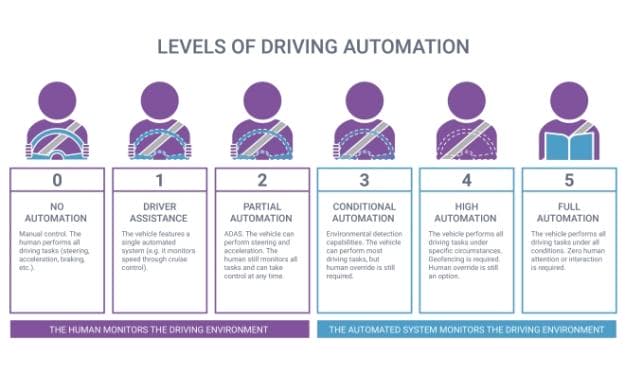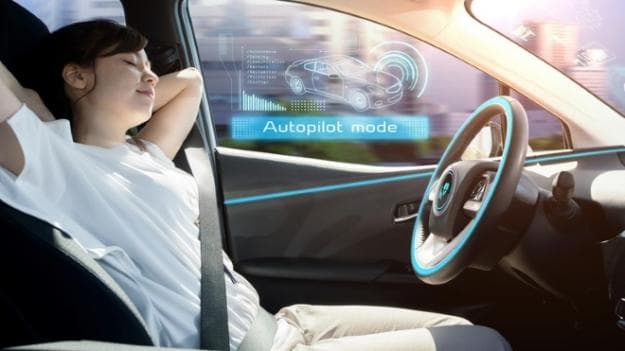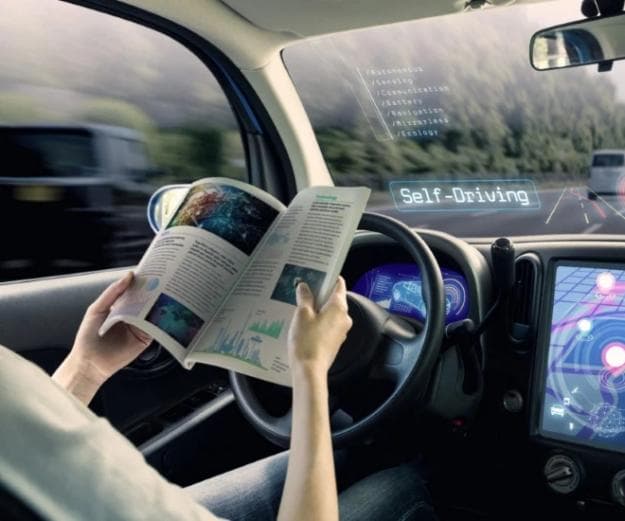Years ago, advances in luxury cars largely revolved around ever-greater speed and ease of control. Then came the rise of electric vehicles (EVs), marketed as the cleaner way to get around and appealing to environmentally conscious drivers. However, in a world of increasingly short attentions spans, it wasn’t long before consumers started looking for the next big thing in automotives. In the second decade of the 21st century, development of artificial intelligence (AI) saw great advances in many aspects such as computer vision, object recognition and game playing. These advances in AI technology led to what is probably the next thing to look out for in the automotive industry, autonomous or self-driving vehicles.
Before dive in, some clarifications are in order. While we say that self-driving cars are going to be the next big thing in the automotive industry, we aren’t discounting the significance of fast cars or the environmental potential of EVs. The need for speed forms a primal link between man and machine, and EVs are simply the next evolution in how we power our cars.
Also, the terms autonomous and self-driving have been used interchangeably to describe two main categories of vehicles, cars made for retail and those made specifically for burgeoning autonomous delivery and ride-hailing services. For this article, we shall be referring primarily to the former.
Of late, self-driving vehicles are becoming an increasingly salient issue amongst automakers. Tesla has offered its Autopilot technology on its vehicles as a standard feature, with the option to upgrade to its “full self-driving” (FSD) system. Other makers are also getting into the game with notable examples being General Motor’s (GM) driver-assist Super Cruise system and the BMW’s Personal CoPilot. However, it should be noted that while these systems might be able to take control of the vehicle, freeing drivers’ hands in certain circumstances, they aren’t capable of fully autonomous driving yet.
According to the Society of Automotive Engineers (SAE), there are 6 levels of driving automation, ranging from level 0 (no driving automation) to level 5 (full driving automation). Most of the technologies available today fall into level 1 or 2. In simple term, level 1 (driver assistance) technologies support the driver by adjusting factors like acceleration but do not take control of the car. Level 2 (partial driving automation) can take control of steering and acceleration but requires the driver to remain alert and responsible for vehicular operations.

Thus, despite how Elon Musk inflates the capabilities of Tesla’s Autopilot and FSD technologies, at present, drivers may be able to hand over control to an automated system for limited periods under certain conditions, such as on a highway, but are still required to stay alert behind the wheel. There is still a long way to go before we can experience fully autonomous driving.
That brings us to the next question. In the 2010s many automakers and news outlets proclaimed that by 2020, we would be entering a world where we would be “permanent backseat driver(s)”. Yet in 2021, it seems that we are no closer than when it was first predicted. Therefore, people are asking why don’t we have fully autonomous driving features yet?
To answer this, we have to understand how self-driving cars work. As mentioned in our introduction, self-driving vehicles rely on AIs which utilise a system of cameras and sensors to monitor road conditions and track objects around the vehicle. This information is used by the onboard AI to determine the ideal route, acceleration and steering. However, before the AIs can make these decisions for themselves, it must be taught the rules of the road and how to react in different scenarios. This entails acquiring an extremely large amount of training data which would be equivalent to billions of hours of driving footage.

Unfortunately, this data is hard to acquire and footage of specific events like vehicular accidents and road debris are even more so. Because of this, the going has been slow and that is why we have yet to see fully autonomous driving systems which can operate a car on the road with the required safety and reliability.
Given that virtually every marketing campaign involving cars talks about the link between man and machine and places emphasis on the experience of driving, it raises questions about why automakers are experimenting with technology which could potentially eliminate the need for a driver to be involved in vehicular operations. In our opinion, the answer might seem a little abstract, but it makes sense if you think about it.

As our lives become increasingly hectic, we often find ourselves grasping for time to wherever we can find it to accomplish the goals we set for ourselves. With the traditional car, being behind the wheel demands our full attention. However, the self-driving vehicle would, in effect, allow us to own time. If we could hand over control for the duration if a trip to an onboard AI, we could free up more time for ourselves to do other things in the car like answer emails or maybe take a nap.
That being said, it is unlikely that the option for manual operation will be removed from automotives any time soon. Being able to drive a car, especially turbocharged beasts, is all part of the experience of ownership. Something primal is ignited when we get behind the wheel of a luxury sports car and feel that power at our fingertips.
Powerfully fast cars will never go out of fashion. The traditional car will simply continue to evolve, taking on new features such as cleaner electric power, integrating new operational capabilities like autonomous driving, giving owners the chance to become master of their own fates and time.
